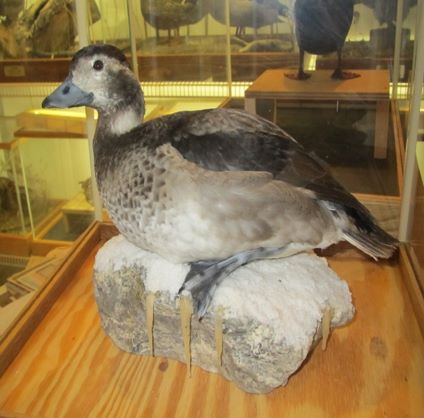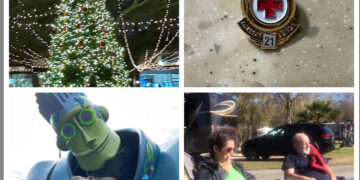I got into duck hunting sometime after I escaped from the army. I have always liked to hunt. Reading stories of hunting interested me greatly. I was never around people who hunted ducks until I met this one guy who liked to hunt ducks and also liked to do taxidermy on the ducks. He invited me to go along on a duck hunt at Chincoteague, Va. Wow! It gets in your blood. He hunted with a local guide in Chincoteague.
As a habitual collector I thought it would be nice to get a collection of mounted male and female ducks. I decided to make a glass case in my woodworking shop for each species, gather habitat at the location and build a diorama for each species. That would also keep the dust off the mounted specimens.
Off to the hunt.
We would get to Chincoteague the day before and get a hotel room. About 4:00 in the morning our alarm would go off. We would get our waders and all the other duck hunting clothes on. It takes a lot of warm clothes due to sitting out on the marshes with the wind blowing across the water. My hunting companion usually went in the last two weeks of January when it’s the coldest which makes it the best time to go hunting for ducks. Ducks move around more when it’s real cold. This is just before the duck season ends at Chincoteague.
We would meet at a designated restaurant where all the duck hunters met their guide. Our guide on this hunt had 3 or 4 assistant guides each with his own boat. After eating breakfast the hunters were assigned an assistant guide and everyone would drive to the docks, loading their hunting gear in their assigned boat. When everyone was on board we would take off into the dark unknown night into who knows where. It’s not too bad unless your morning happens to be foggy and it can get extremely foggy in this area. On one morning that I can remember the guide had to follow the banks of the reeds so he would know where to drop you off at your blind.
Finally your guide would stop and let you off and tell you which direction to go to get to your blind. You would fall out of your boat into the knee deep water, scramble up the bank, and find your balance. That is hair raising, walking in unfamiliar territory in pitch blackness hoping to find your blind. After finding it, you climb up in the structure and settle down to get your breath from walking in water and muck, making sure you have your hunting bag and shotgun.
After letting everybody off at their assigned blind, the guide would come back and put out decoys around each blind. He would then go off a short distance from the blind (out of gunshot range) and wait to get a call from a hunter that they had a duck down. You couldn’t shoot until at a designated time set by the area game wardens. Every blind and its hunters were given a 2 way radio. When you shot a duck, you would call your guide, who was waiting somewhere close by and he would come and fetch up the duck for you. You were not supposed to get out of your assigned blind.
The ducks I was mainly wanting, were Old Squaw, any of the Merganser’s, Ruddy Ducks and possibly a Goldeneye. Ducks usually quit flying around noon so duck hunting usually quits then.

On this day our guide came and said he was ready to come in as ice was beginning to form around the boat. We stood there talking awhile and as he was starting to gather up the decoys, out of nowhere, came this duck and landed right in between the decoys. He must have wanted to see what we were doing. And would you know, it was a male Goldeneye. We went for our guns as we had already put them away, not thinking we would see anything more due to the ice forming around the boat, the blind, and the guide at the scene. Until we got our guns out and loaded he was gone. Another lesson learned! Just think, how close we came from one of us getting a Goldeneye.
The Common Goldeneye, Bucephala clangula, is a medium size sea duck with a big head and a large white spot between the eye and the bill. The range maps show they are barely included on Chincoteague. I have never seen another one.
I have succeeded in getting a female Old Squaw, and all three species of Mergansers’ in pairs for the hunting room.

































